John Hurrell – 15 April, 2023
Installation art contributors include Olafur Eliasson (two works), Pae White, James Turrell, Tacita Dean, Lis Rhodes, David Batchelor, and Liliane Lijn. And, generous examples of paintings drawings and prints from Turner, Constable, Monet, Albers and others. Plus brilliant film and mirror-sculpture from Moholy-Nagy and Kusama, and a wonderful constructivist painting also from Moholy-Nagy. The show is a richly layered presentation that is packed with surprises that get better as you move through it and encounter more and more immersive spaces—so there is less wall-label reading and more viscerality.
Auckland
Josef Albers, John Constable, David Batchelor, John Brett, Vija Celmins, Edmund Collein, John Constable, Tacita Dean, Albert Dubois-Pillet, Olafur Eliasson, Dan Flavin, Armand Guillaumin, Vilheim Hammershøi, Hanaya Kanbee, Wassily Kandinsky, Anish Kapoor, György Kepes, Yayoi Kusama, Liliane Lijn, John Linnell, László Maholy-Nagy, John Martin, Claude Monet, Jacob More, Aaron Penley, Camile Pissarro, Lis Rhodes, George Richmond, Bridget Riley, William Rothenstein, Peter Sedgley, Alfred Sisley, Philip Wilson Steer, Stefan Themerson, Joseph Mallard Turner, James Turrell, Luigi Veronesi, Pae White, Joseph Wright of Derby, Iwao Yamawaki
Light from the Tate: the 1700s until now
Curated by Matthew Watts & Sophie Matthiesson
1st March, 2023 - 25 May, 2023
In this superb amalgam of traditional historic paintings mixed with contemporary installation, photography and film, we encounter forty artists’ investigations of light as a ‘natural’ and ‘unnatural’ (manmade) phenomenon.
As an unanticipated successor to the popular Haywood survey of installation light art presented in Auckland nine years ago (David Batchelor, Olaf Eliasson, Dan Flavin and James Turrell appear in both), this new London show is slightly less about colour and more about tone —with a few clever insertions from some Auckland collections. It focusses more on explaining the detail of art history and the scientific research that captivated groups like the Impressionists, Post-Impressionists and Op artists, and thus is a little less preoccupied with the immersive and experiential, instead effortlessly locking history and the present into one highly informative, yet accessible, presentation. Circular motifs constantly reappear in what is impressively an exceptionally tightly organised exhibition.
Installation art contributors include Olafur Eliasson (two works), Pae White, James Turrell, Tacita Dean (film), Lis Rhodes, David Batchelor, and Liliane Lijn. And, generous examples of paintings drawings and prints from Turner, Constable, Monet, Albers and others. Plus brilliant film and mirror-sculpture from Moholy-Nagy and Kusama, and a wonderful constructivist (en abyme) painting also from Moholy-Nagy. The show is a richly layered presentation that is packed with surprises that get better as you move through it and encounter more and more immersive spaces—so there is less wall-label reading and more viscerality.
Note that most of the photos here (above) are supplied by the Tate, particularly of parts of their collection in London. In fact, the Auckland hang of the Eliasson installations is notably better, for the pale and comparatively uncluttered walls here exude an airy (less cavelike) ambience that unites the whole project. More importantly, this allows the presence of ambient gallery light beyond that of the actual featured artwork, letting us see the architectural properties of the visited gallery—and not supressing them. The creative in situ possibilities exploited by the Auckland design team seem sensibly restrained.
While the photography section is exceptionally strong, there is very little sculpture in this show—only Yayoi Kusama’s surprisingly subtle and unassuming The Passing Winter (2005), for my mind, the most intriguing work in the exhibition, with its cut circles that allow you to peer inside a glass cube that is mirrored on inside and outside surfaces, and which seem to ‘trap’ nearby passing movement. Kusama, Lis Rhodes, Pae White, Liliane Lijn, Tacita Dean, Vija Celmins and Bridget Riley are the women represented.
Of the installations, Elaisson’s Stardust Particle (2014), Turrell’s Raemar, Blue (1969) and Rhodes’ Light Music (1975) are for me the highlights.
Olafur Elaisson’s turning skeletal polyhedron exploits refraction, radiation and reflection so that delicate pinks and other colours tinge the wondrously complex maze of spinning shapes and linear shadows traversing the walls. More complicated than his other contribution (Yellow Versus Purple (2003)) this work is like an evolving geometric planetarium.
Lis Rhodes is an artist/composer. Her two screens at opposite ends of a carefully measured, darkened gallery box-space, feature moving Scully-like tonal abstractions that generate the soundtrack. The two (abstract image and musique concrète) are inseparable (precisely synchronised) and the presence of the audience’s moving shadows affects the speed and focusing of the b/w imagery—so each installation creates a unique experience.
James Turrell’s contribution is a calculated foil to a vertical black hole in a tall wooden box made by Anish Kapoor (at the start of the show) that in its murk hides a large faintly pale circle. Turrell in contrast has created a wall-sized horizontal dark blue rectangle that hovers inside a thick white ‘frame’ of back-reflected light and faint ‘smoke’, an oblong seen inside a cut-out perimeter (a negative ‘moat’). It is mysteriously suspended, as if floating unaided in midair.
Although the Hayward Light Show is my favourite touring international exhibition ever seen in Auckland, this Tate production is a real treat, one that matches other great Tate shows seen here such as The Body Laid Bare. It is thrilling to see the ‘star’ Turner paintings and drawings, three Monets, and Constable’s extraordinary paintings and mezzotints, but there are also many stunning works by comparatively unknown artists like Peter Sedgley, Vilheim Hammershøi, John Brett, Luigi Veronesi or Stefan Themerson.
With over a hundred works to linger over, this is an exceptionally rewarding exhibition to visit.
John Hurrell
Recent Comments
Liz Eastmond
Martin Creed’s 'Work No. 312, A lamp going on and off' [inserted into the exhibition in late March--ed.] is perhaps ...
Liz Eastmond
Light? As a theme show, now? I admit that’s what I rather grudgingly queried when I first read of the ...
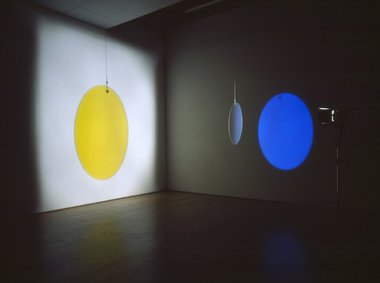

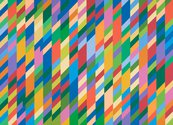
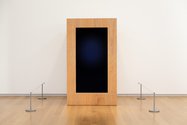

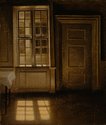
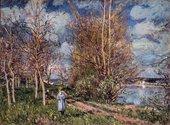

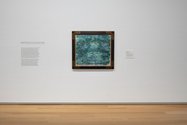
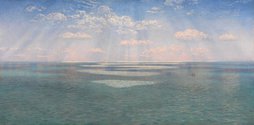
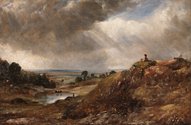
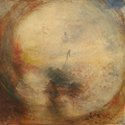
 Two Rooms presents a program of residencies and projects
Two Rooms presents a program of residencies and projects Advertising in this column
Advertising in this column



This Discussion has 2 comments.
Comment
Liz Eastmond, 10:49 p.m. 25 May, 2023 #
Light? As a theme show, now? I admit that’s what I rather grudgingly queried when I first read of the upcoming exhibit 'Light from Tate.' Am I a grinch? Probably. Plus I knew Tate Britain’s much anticipated new hang, the first for ten years, was due May 23. That’s today-- as I write this. So being a grinch twice over, I did wonder if there was any connection…It’s often to the advantage of recipient galleries of course, and loaning institutions are glad to get some works temporarily off-site. But for grinchy me, this show tends to slide at times towards Tate lite. That’s not to say I won’t return for a third time. There is much to enjoy, and the exhibit really engages with the contemporary installation work. I loved the Maholy-Nagy, the Turrell, the Eliassons, the Tacita Dean…
But I do have questions. A theme like ‘light’-- well, not ‘cats in art’ exactly--can have a tinge of the themed calendar. Despite its obvious potential and significance. But in relation to our current world (except those Apocalyptic 19th century ones)? However, it has certainly become something of a crowd-pleaser. All good…. yes, definitely. But it also seems impermeable to critique. Most reviews have wallowed in superlatives. And some individual works are. But…why not a real Blake, rather than a Blake look-alike (John Richmond)? There are plenty in Tate’s collection. Why no David Hockney 'A Bigger Splash' (1967)–-with its harsh quality of, distinctly non-English Californian light? Why no exploration of the nocturne? Some works connect with that category and Tate owns Whistler’s famous 'Nocturne in Blue and Gold.' What about Bill Brandt’s dramatically-lit street night scene photographs? That’s just four not making the long-haul. You can always whinge about what’s not in, I know, but major relevant works like these in the out basket? And Sir William Rothenstein’s 'Mother and Child' in?
The Tate’s acquisitions policy is also worth a thought. Lovely Turners are there in force of course--his gifted 550 oils, 2,000 watercolours and 30,000 works on paper formed the basis of the collection. But it’s now well-known that Tate Britain had few women artists in its collection until recently. The new May--onwards hang aims-–with much media fanfare--to redress that. But it is 2023. A lot of the ground-breaking feminist research on retrieving the ‘hidden’ history of women artists had been achieved by the 1980s. Light from Tate has only six.
The Tate Gallery’s acquisition policy as a whole was, until nearly 2000 when Tate Modern opened, notoriously conservative. Few outstanding Impressionist works, so appropriate here, featured. The Monets are modest. But then the first Picasso bought by the Tate was acquired as late as 1933: a very conservative 1901 naturalistic still life. So it’s unsurprising that light-enthusiast expat New Zealand artists like Len Lye, Bill Culbert and Billy Apple (his remarkable 1960s neon works) were not on the collection shopping list.
Liz Eastmond, 10:51 p.m. 25 May, 2023 #
Martin Creed’s 'Work No. 312, A lamp going on and off' [inserted into the exhibition in late March--ed.] is perhaps the most provocative work in this exhibition. But it’s not the notorious 2001 Turner Prize-winning 'Work No. 227, The lights going on and off,' sadly. I didn’t initially notice it, set in a corridor. Why wasn’t 'No. 227' chosen instead? It was controversial. It got attacked with eggs. The media had a field day. So my last grinch is: why do the two sub-Whistler/Vermeer (Vilhelm Hammershoi) works enjoy a privileged, contained gallery space, when you could have had No. 227, a single light bulb there, going…on…and…off…and…repeat, infinitum?
Vermeer? Get to the Rijksmuseum by June the 4th.
Participate
Register to Participate.
Sign in
Sign in to an existing account.